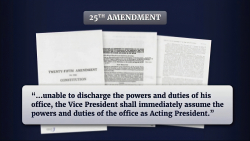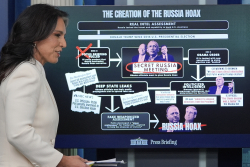Rather than targeting only one group of young people, Beijing has directed its recruitment efforts to a wider range of sources.
Even as all branches of the United States military met their respective recruiting goals for fiscal year 2025 (FY25) and are either on track to reach or exceed them, there is still one area where the services continue to fall short for FY26. Across the Department of Defense (DoD), a shortage of pilots remains.
Several factors are at play, including financial competition from commercial airlines and capacity limitations in pilot training. The US Air Force has sought to address the issue by offering bonuses and introducing partnerships with the private sector.
China has also sought to avoid the shortage, notably for aviators for its carrier-based aircraft. The People’s Liberation Army Navy (PLAN) has announced that its recruiting efforts have reached record numbers, which could enhance the combat effectiveness of its aircraft carriers.
Beijing’s push for naval aviators comes as the PLAN’s third flattop, the Type 003 Fujian, is currently undergoing sea trials and is expected to enter service later this year. Unlike the Type 001 Fujian and Type 002 Shandong, which each utilize ski jump ramps to launch aircraft, the Type 003 Fujian is equipped with an electromagnetic catapult system, enabling heavier aircraft to operate from the carrier.
According to reports from the Chinese state-run Global Times, the strong recruitment has come from a diverse pool of candidates, including recent high school graduates, students from China’s naval aviation school, and even individuals with bachelor’s and master’s degrees from the country’s military and civilian universities.
Rather than targeting just one group of young people, Beijing has directed its recruitment efforts to a wider range of sources.
“The fact that pilot recruitments have reached a new high shows that the intake is steadily increasing, which aligns with the development trend of China’s carrier-based aircraft,” Fu Qianshao, a Chinese military affairs expert, told the Global Times on Friday.
According to Fu, China’s rapid military expansion, which includes the air wings for its carriers, has resulted in a need for “more qualified pilots.” The different training pathways can help “broaden the talent pool,” but also “extend pilot careers” and even improve the quality of the military aviators.
The PLAN could have more carrier-trained pilots than the number of aircraft available, but that will ensure that readiness is not impacted by illness or even attrition in wartime.
“This ensures operational readiness even if some pilots are temporarily unavailable. Additionally, some aircraft require two-person crews. The diversity of missions also demands a higher number of pilots than aircraft,” Fu added.
As China has also begun construction on a fourth carrier, its efforts to continue recruiting will ensure that, as the fleet expands, it will have trained pilots ready for deployment. There is speculation that the future warship will be nuclear-powered and could have an even larger air wing than the Fujian.
In addition, the PLAN is seeking to expand the skills that its naval aviators are being taught.
“In the future, pilots in carrier aviation units will need to not only fly aircraft but also operate electronic warfare systems,” Fu explained. “This raises the bar for professional skills and expands the demand for talent across disciplines. Therefore, accelerating pilot training is imperative.”
About the Author: Peter Suciu
Peter Suciu has contributed over 3,200 published pieces to more than four dozen magazines and websites over a thirty-year career in journalism. He regularly writes about military hardware, firearms history, cybersecurity, politics, and international affairs. Peter is also a Contributing Writer for Forbes and Clearance Jobs. He is based in Michigan. You can follow him on Twitter: @PeterSuciu. You can email the author: [email protected].
Image: Shutterstock / vaalaa.

















